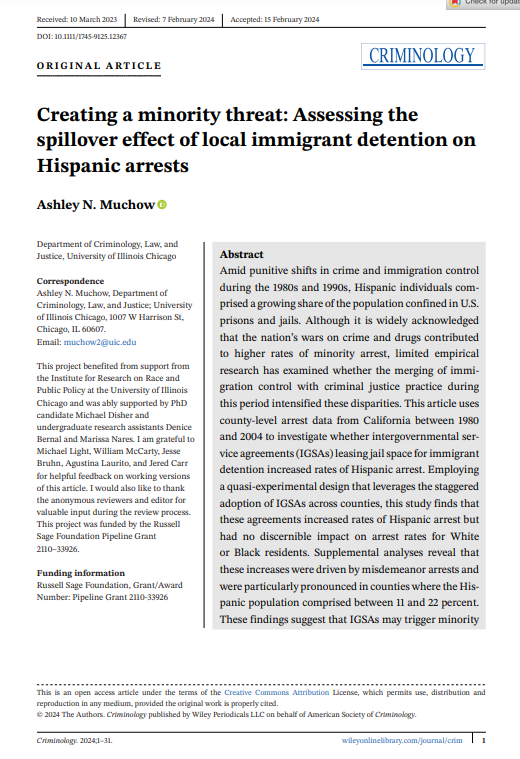By James Lewis, Sarah Marsden, Adrian Cherney, Martine Zeuthen, Lotta Rahlf, Chloe Squires, Anne Peterscheck
Background
Increasingly, counter-radicalisation interventions are using case management approaches to structure the delivery of tailored services to those at risk of engaging in, or engaged in, violent extremism. This review sets out the evidence on case management tools and approaches and is made up of two parts with the following objectives.
Objectives
Part I: (1) Synthesise evidence on the effectiveness of case management tools and approaches in interventions seeking to counter radicalisation to violence. (2) Qualitatively synthesise research examining whether case management tools and approaches are implemented as intended, and the factors that explain how they are implemented. Part II: (3) Synthesise systematic reviews to understand whether case management tools and approaches are effective at countering non-terrorism related interpersonal or collective forms of violence. (4) Qualitatively synthesise research analysing whether case management tools and approaches are implemented as intended, and what influences how they are implemented. (5) Assess the transferability of tools and approaches used in wider violence prevention work to counter-radicalisation interventions.
Search Methods
Search terms tailored for Part I and Part II were used to search research repositories, grey literature sources and academic journals for studies published between 2000 and 2022. Searches were conducted in August and September 2022. Forward and backward citation searches and consultations with experts took place between September 2022 and February 2023. Studies in English, French, German, Russian, Swedish, Norwegian and Danish were eligible.
Selection Criteria
Part I: Studies had to report on a case management intervention, tool or approach, or on specific stages of the case management process. Only experimental and stronger quasi-experimental studies were eligible for inclusion in the analysis of effectiveness. The inclusion criteria for the analysis of implementation allowed for other quantitative designs and qualitative research. Part II: Systematic reviews examining a case management intervention, tool or approach, or stage(s) of the case management process focused on countering violence were eligible for inclusion.
Data Collection and Analysis
Part I: 47 studies were eligible for Part I. No studies met the inclusion criteria for Objective 1; all eligible studies related to Objective 2. Data from these studies was synthesised using a framework synthesis approach and presented narratively. Risk of bias was assessed using the CASP (for qualitative research) and EPHPP (for quantitative research) checklists. Part I: Eight reviews were eligible for Part II. Five reviews met the inclusion criteria for Objective 3, and seven for Objective 4. Data from the studies was synthesised using a framework synthesis approach and presented narratively. Risk of bias was assessed using the AMSTAR II tool.
Findings
Part I: No eligible studies examined effectiveness of tools and approaches. Seven studies examined the implementation of different approaches, or the assumptions underpinning interventions. Clearly defined theories of change were absent, however these interventions were assessed as being implemented in line with their own underlying logic. Forty-three studies analysed the implementation of tools during individual stages of the case management process, and forty-one examined the implementation of this process as-a-whole. Factors which influenced how individual stages and the case management process as a whole were implemented included strong multi-agency working arrangements; the inclusion of relevant knowledge and expertise, and associated training; and the availability of resources. The absence of these facilitators inhibited implementation. Additional implementation barriers included overly risk-oriented logics; public and political pressure; and broader legislation. Twenty-eight studies identified moderators that shaped how interventions were delivered, including delivery context; local context; standalone interventions; and client challenges. Part II: The effectiveness of two interventions – mentoring and multi-systemic therapy – in reducing violent outcomes were each assessed by one systematic review, whilst three reviews analysed the impact that the use of risk assessment tools (n = 2) and polygraphs (n = 1) had on outcomes. All these reviews reported mixed results. Comparable factors to those identified in Part I, such as staff training and expertise and delivery context, were found to shape implementation. On the basis of this modest sample, the research on interventions to counter non-terrorism related violence was assessed to be transferable to counter-radicalisation interventions.
Authors' Conclusions
The effectiveness of existing case management tools and approaches is poorly understood, and research examining the factors that influence how different approaches are implemented is limited. However, there is a growing body of research on the factors which facilitate or generate barriers to the implementation of case management interventions. Many of the factors and moderators relevant to countering radicalisation to violence also impact how case management tools and approaches used to counter other forms of violence are implemented. Research in this wider field seems to have transferable insights for efforts to counter radicalisation to violence. This review provides a platform for further research to test the impact of different tools, and the mechanisms by which they inform outcomes. This work will benefit from using the case management framework as a way of rationalising and analysing the range of tools, approaches and processes that make up case managed interventions to counter radicalisation to violence.
Campbell Systematic Reviews
Volume 20, Issue 2
June 2024





















